Transforming your garden into a lush, fragrant paradise is easier than you think with the versatile gardenia. Whether you’re looking to create a stunning informal hedge, a charming ground cover, or a standout feature in a pot, gardenias offer a plethora of landscaping possibilities. Their glossy green leaves and beautifully scented flowers can elevate any outdoor space, making it a serene retreat.
However, achieving the perfect gardenia landscape requires more than just planting these beauties.
Factors like soil quality, watering habits, and pest control play crucial roles in their health and vibrancy. By understanding and addressing these elements, you can ensure your gardenias thrive, offering you a breathtaking and fragrant garden year-round.
Choosing the Right Location for Gardenias
Choosing the right spot for gardenias is crucial for their health and fragrance.
Sunlight and Shade Requirements
Place gardenias where they get full sun to part shade. They need good light but should be protected from direct afternoon sunlight. Morning sun or filtered light works best. In tropical climates, avoid the harsh afternoon sun by planting them in an area with some shade.
Drainage and Proximity Considerations
Gardenias require well-drained, rich soil that’s slightly acidic. If your soil quality is poor, mix in compost or well-rotted manure beforehand. Avoid planting them in waterlogged areas.
To promote healthy root systems, ensure the plant is placed at the same level as it was in the pot. Keep gardenias away from large trees since they can compete for nutrients and moisture.
By paying attention to these aspects, your gardenias will thrive and enhance your garden’s appeal.
Designing with Gardenias: Themes and Styles
Gardenias can greatly enhance garden designs, adding a touch of elegance and fragrance. Here’s how you can incorporate them into different garden styles.
Classic and Romantic Garden Styles
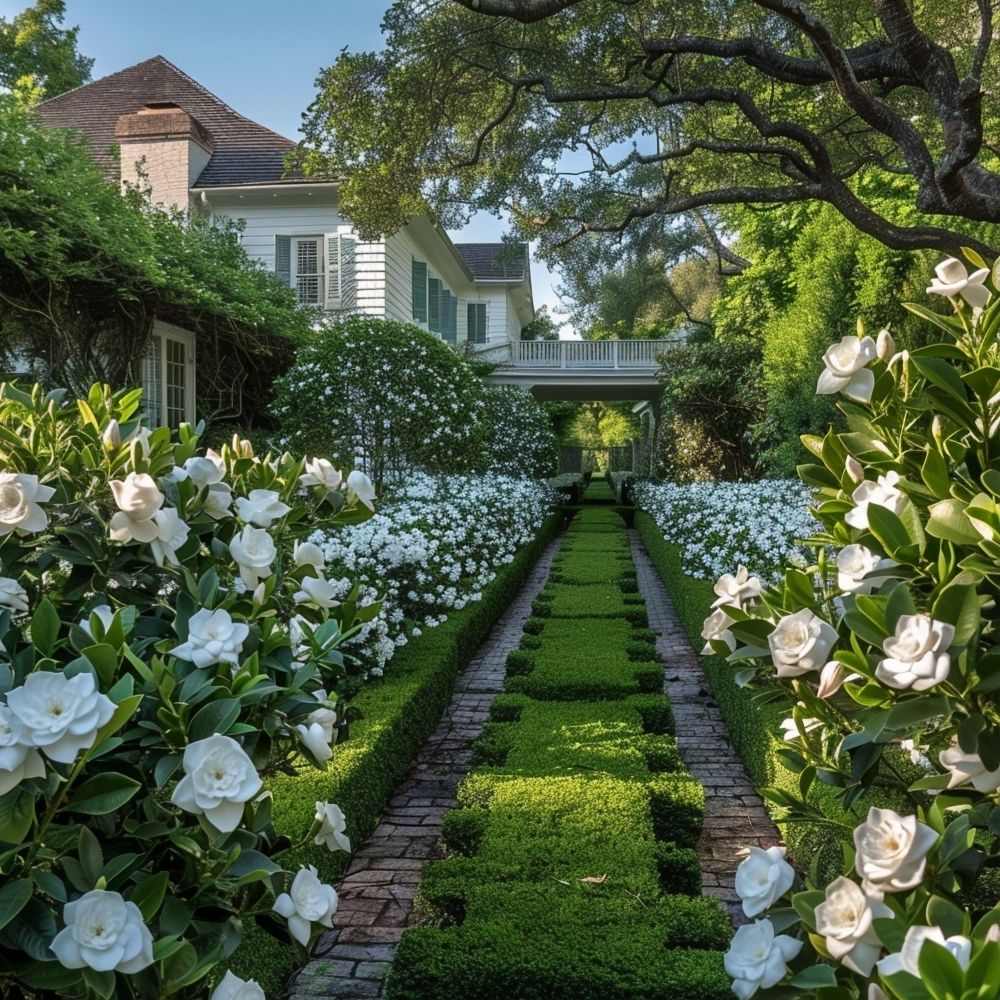
Opt for Gardenias like ‘Florida’ or ‘O So Fine’ to create an enchanting atmosphere. Plant them in symmetrical patterns to craft a formal look. Use them as hedges or borders for a structured, timeless feel. Pair with roses or lavender for added romance.
Modern and Minimalist Approaches
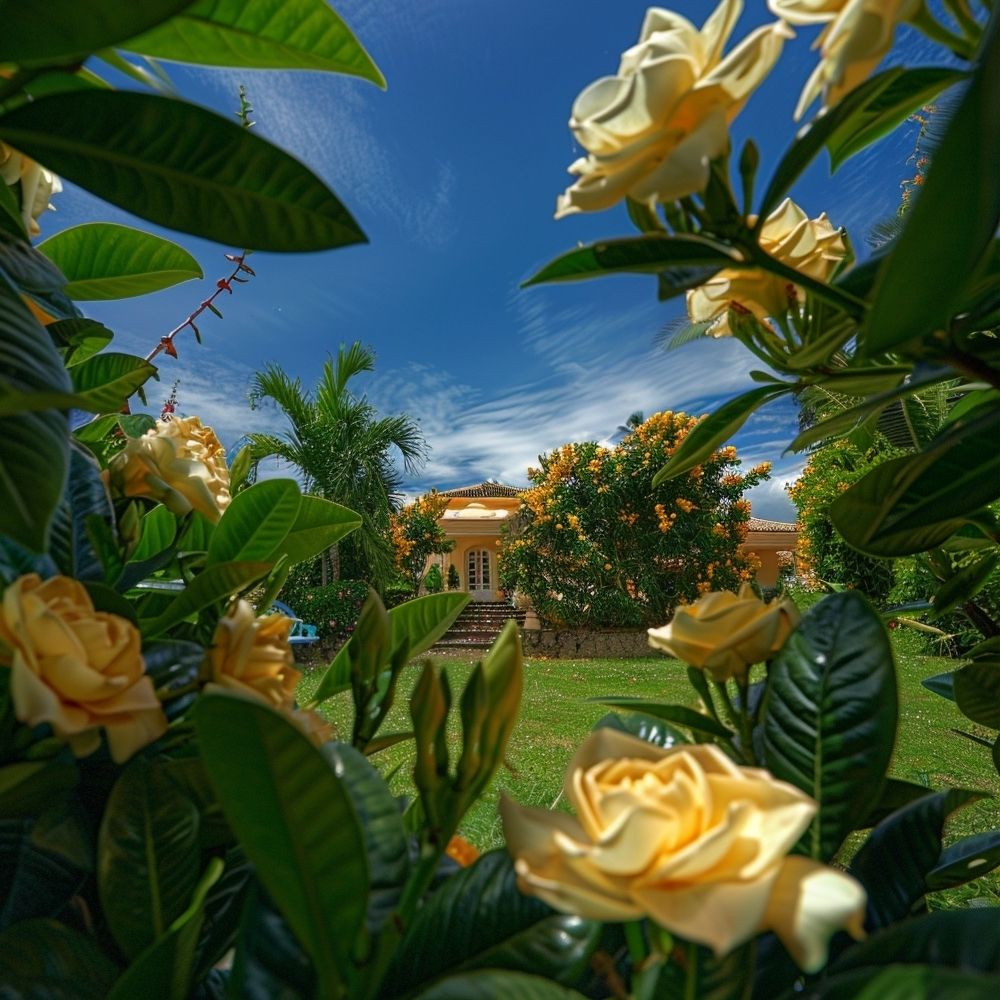
Select Gardenias like ‘Gold Magic’ for clean lines and simplicity. Plant them in sleek containers or as stand-alone features. Use them sparingly to maintain an uncluttered appearance. Pair with grasses or succulents for contrast.
Coastal and Tropical Themes
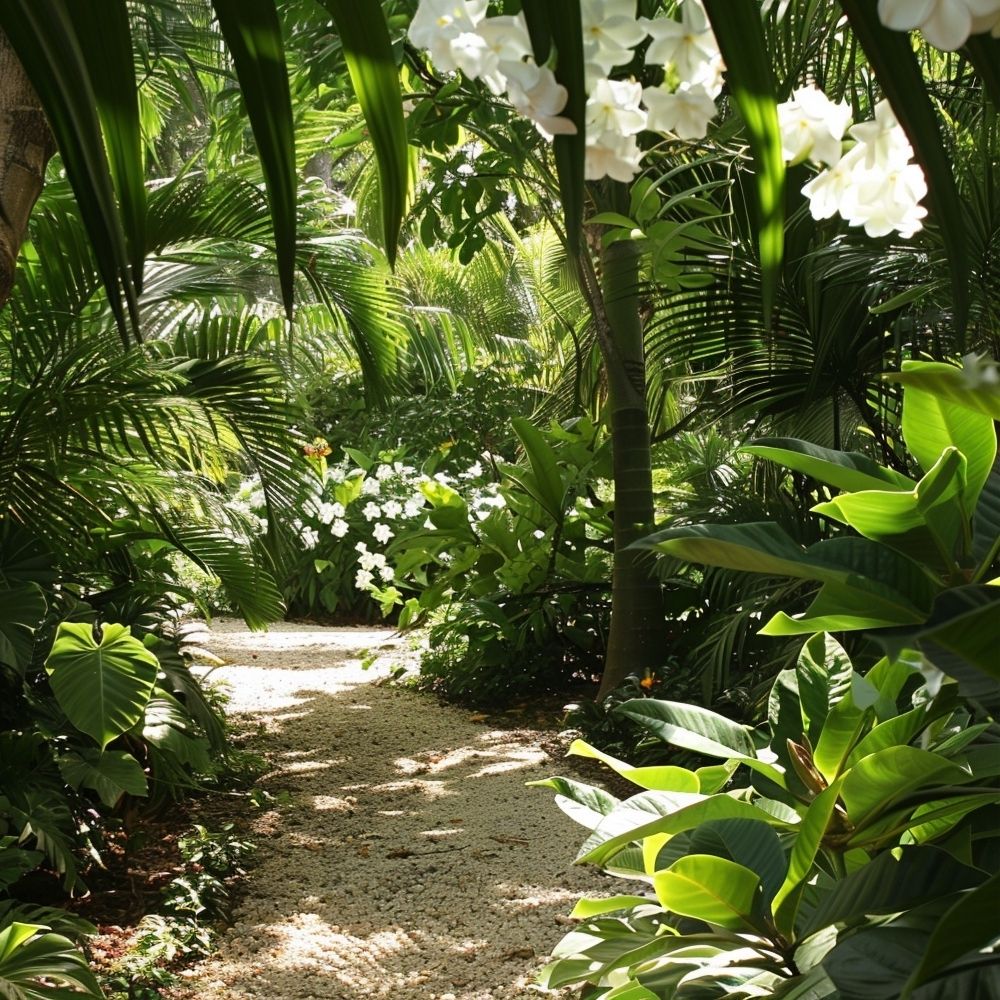
Choose varieties like ‘Professor Pucci’ for a lush, exotic vibe. Place gardenias in clusters to mimic natural growth. Mix them with palms, ferns, or hibiscus for a beachy feel. Use them around water features for added appeal.
By using these tips, you can ensure Gardenias fit seamlessly into your preferred garden style.
Companion Planting for Gardenias
Creating harmonious combinations with gardenias can elevate your garden’s charm. Choose plants that complement gardenias while enhancing their natural beauty.
Complementary Shrubs and Perennials
Pair gardenias with lavender or lantana. Lavender’s soft purple hue contrasts beautifully with gardenia’s white blooms. Lantana offers vibrant colours and is heat-tolerant, making it an excellent companion. For additional texture, consider planting Heucherella ‘Twilight’. Its silvery-purple foliage adds elegance and drama.
Colour Contrasts and Harmonies
Create striking visual effects by pairing gardenias with colourful ground covers. Pink Scabiosa ‘Kudo’ provides a floral carpet that highlights gardenia’s pristine blooms. Gerbera daisies can add playful colour. Meanwhile, dark green foliage plants like hostas offer a pleasing background contrast.
Beneficial Planting Combinations
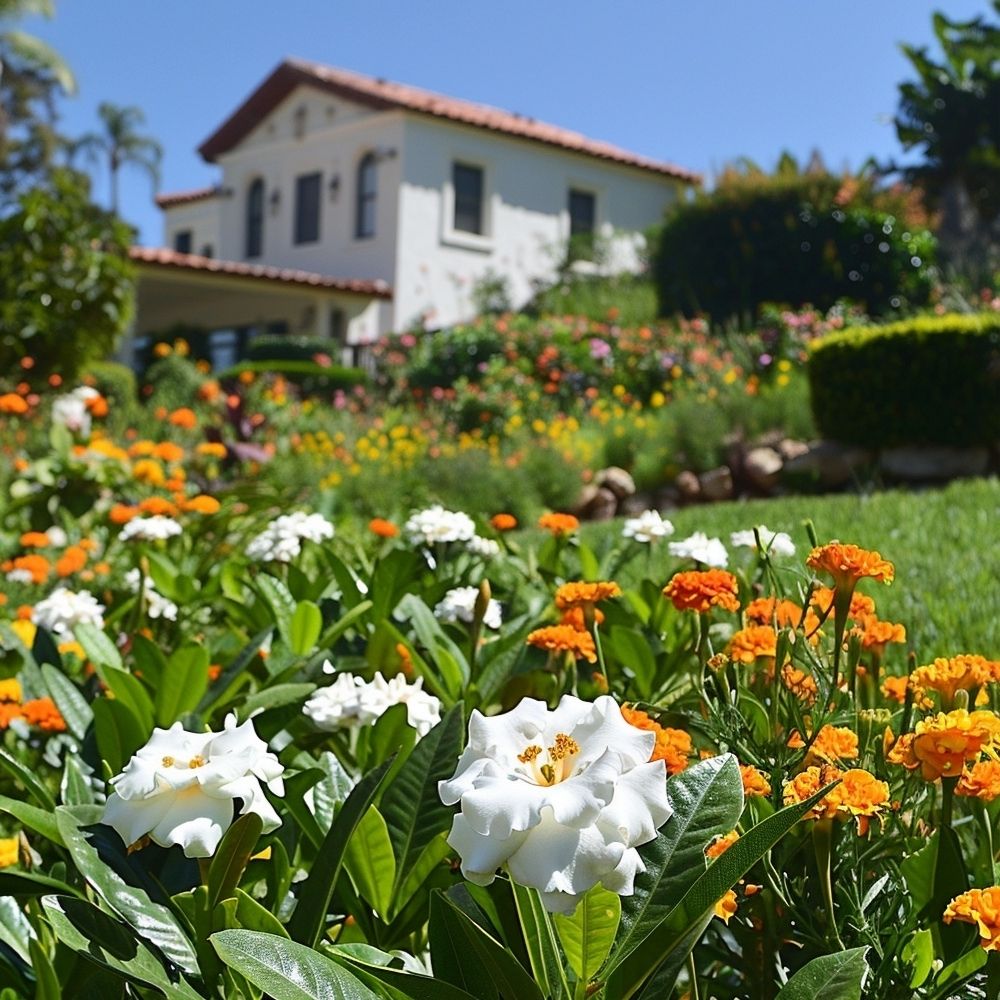
Select plants that benefit gardenias by improving their health. Marigolds can help repel nematodes, protecting gardenia roots. To deter aphids and whiteflies, plant companion herbs such as basil or mint nearby. Healthier gardenias attract fewer pests, so keeping them well-watered and fertilised is key.
By choosing the right companions, you can create a lush, vibrant garden that showcases the beauty of your gardenias.
Practical Tips for Planting Gardenias
To get the most out of your gardenias, careful preparation and planting are key. Here’s what you need to know to help your gardenias thrive.
Preparing the Soil
Gardenias prefer slightly acidic, well-drained, and rich soil. If your soil quality is poor, mix in some compost or well-rotted manure to boost fertility. This will provide essential nutrients that gardenias love.
Timing and Techniques for Planting

You can plant gardenias at any time of the year. Choose a spot with full sun to part shade, depending on your variety. Dig a hole twice as wide but the same depth as the plant’s pot. Place the plant in the hole at the same level it was in the pot, and backfill with your enriched soil.
Make sure to water well after planting. Deep, regular watering helps them thrive, particularly during the flowering season and warmer months. Mulch around the base to keep the roots cool and retain moisture.
Ongoing Care and Maintenance
Watering and Feeding Requirements
Water gardenias deeply and regularly, particularly during flowering and warmer months. This plant thrives on consistent moisture but avoid waterlogging. Use slightly acidic, well-drained soil, and mulch to retain moisture and keep roots cool. Feed gardenias with a balanced, acidic fertiliser every month during the growing season.
Pruning and Seasonal Care
Prune your gardenia after it flowers, usually at the end of summer or early autumn. Well-timed pruning encourages bushier growth and prevents legginess. Keep it hydrated before and after pruning, and fertilise with an improved soil formula right after trimming.
Monitoring for Pests and Diseases
Regularly check your gardenias for sap-sucking pests like aphids, thrips, and whiteflies. Shake the plant over a white sheet to spot tiny insects. Treat affected plants with an appropriate pest control spray. Keep an eye out for sooty mould, which often comes with insect infestations, and address it promptly to maintain plant health.
Seasonal Considerations and Protecting Gardenias
Managing gardenias requires seasonal adjustments to keep them thriving. Here are key tips for ensuring your gardenias stay healthy through different seasons.
Winter Care Strategies
Protecting gardenias in winter is crucial. Mulch generously around the base to insulate roots from frost. In regions with harsh winters, consider using frost cloths or garden fleece to cover plants during cold snaps. Avoid watering when the temperature drops to prevent frost damage to the roots.
Adjustments for Summer Heat
Gardenias can struggle with extreme heat. Water deeply and regularly to keep the soil moist, particularly during flowering and hot months. Apply mulch to retain moisture and cool the roots. If your gardenias are in pots, move them to a shaded area during the hottest part of the day to prevent leaf scorch. Remember, consistent deep watering is essential for maintaining their health in summer.
Creative Ideas for Using Gardenias in Landscaping
Gardenias add both beauty and fragrance to any landscape. Here are some creative ways to incorporate them into your garden.
Borders and Edging
Use gardenias to define borders and edges. Plant them alongside walkways or garden beds to create a visual boundary. Choose dwarf varieties for well-defined edges. Regularly trim to maintain a tidy appearance.
Feature Plants and Focal Points
Make gardenias the star of your garden by using them as feature plants. Position them at focal points like the centre of a garden bed or at the entrance. Their lush foliage and fragrant blooms draw attention. Elevate their appearance with a backdrop of contrasting colours and textures.
Incorporating Gardenias in Containers and Pots
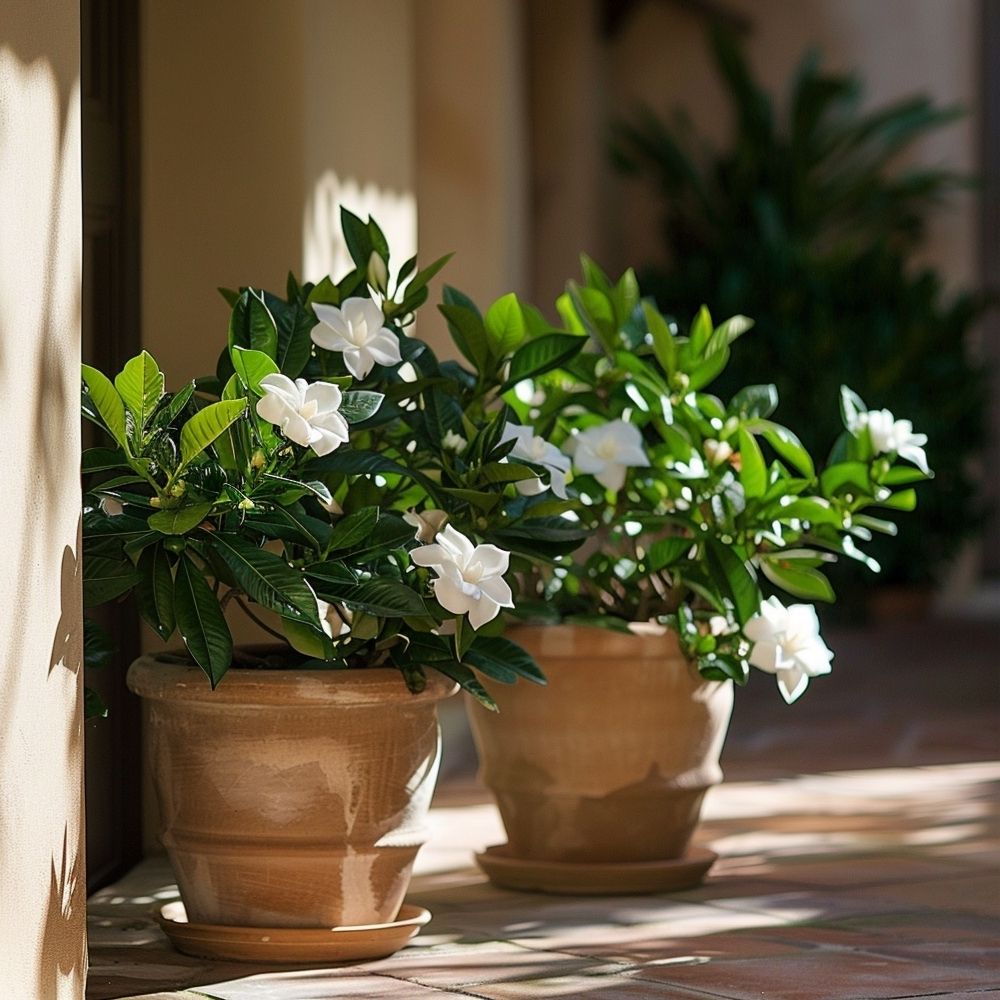
Gardenias thrive in containers and pots, making them versatile for patios and balconies. Use decorative pots to complement their elegance. Ensure proper drainage to prevent root rot. Place containers where they can receive morning sun and afternoon shade.
These strategies will help you make the most of gardenias in your landscape, enhancing both aesthetics and aroma.
Common Challenges and Solutions
Maintaining and growing gardenias can pose several challenges. Here’s how you can address these common issues.
Dealing with Soil PH Issues
Gardenias thrive in slightly acidic soil. If your soil isn’t within this range, your plants may well struggle. Use a soil pH test kit to determine acidity levels. If it’s too alkaline, add acidic compost or specific products designed to lower pH.
Managing Common Diseases and Pests
Gardenias are prone to pests like aphids, thrips, whiteflies, and scale insects. They may also suffer from sooty mould and nematodes. Regularly inspect your plants for signs of infestation. If you spot pests, treat them immediately with a suitable insecticide. Use horticultural oil to combat sooty mould, often caused by sap-sucking insects.
Overcoming Climate Limitations
Gardenias prefer mild climates but can adapt to varying conditions with proper care. Protect them from extreme temperatures by positioning them in a spot with partial shade. In cooler climates, mulch around the base to retain warmth and moisture. In warmer areas, ensure plants get enough water, especially during flowering.
See More:
